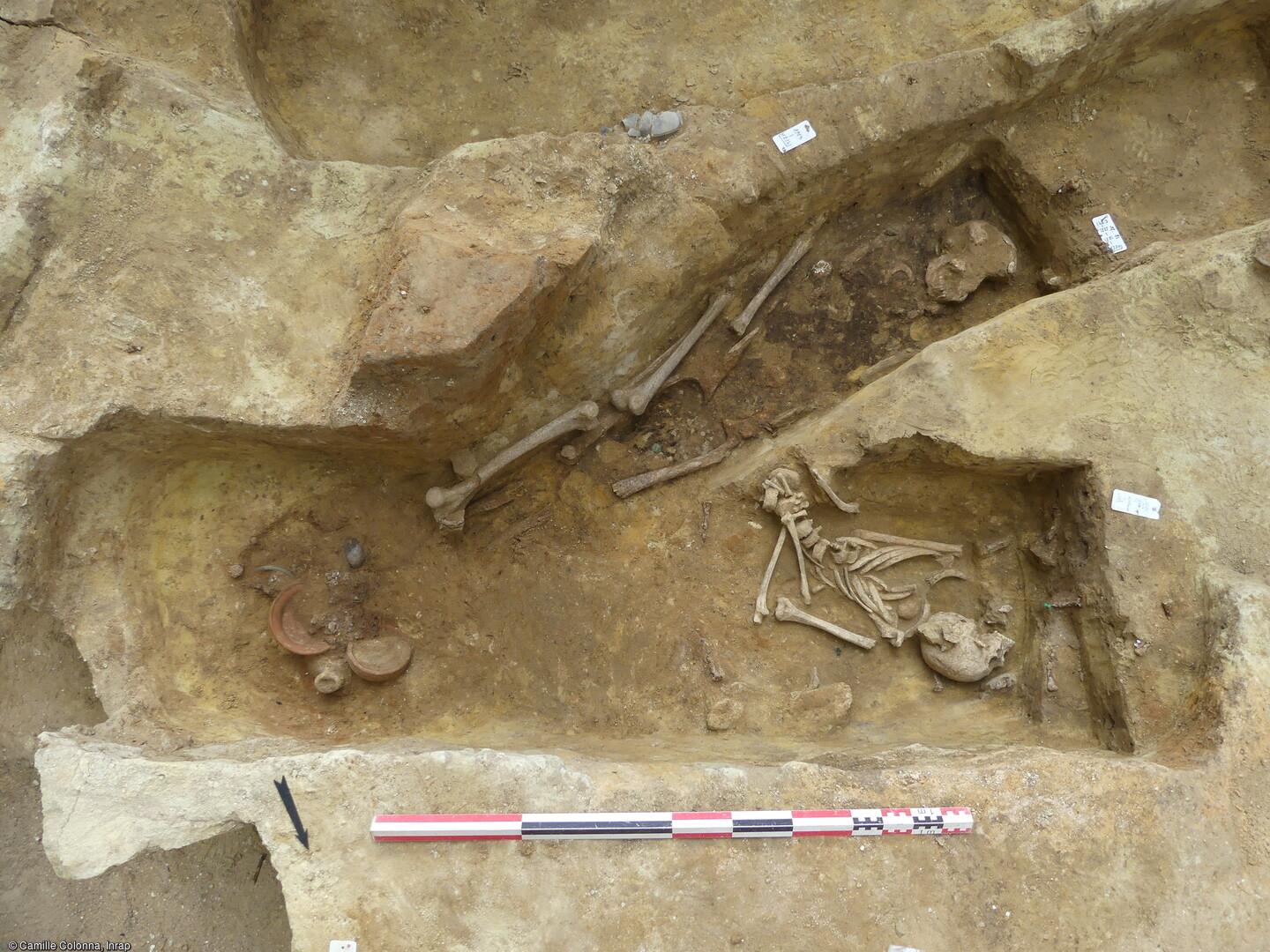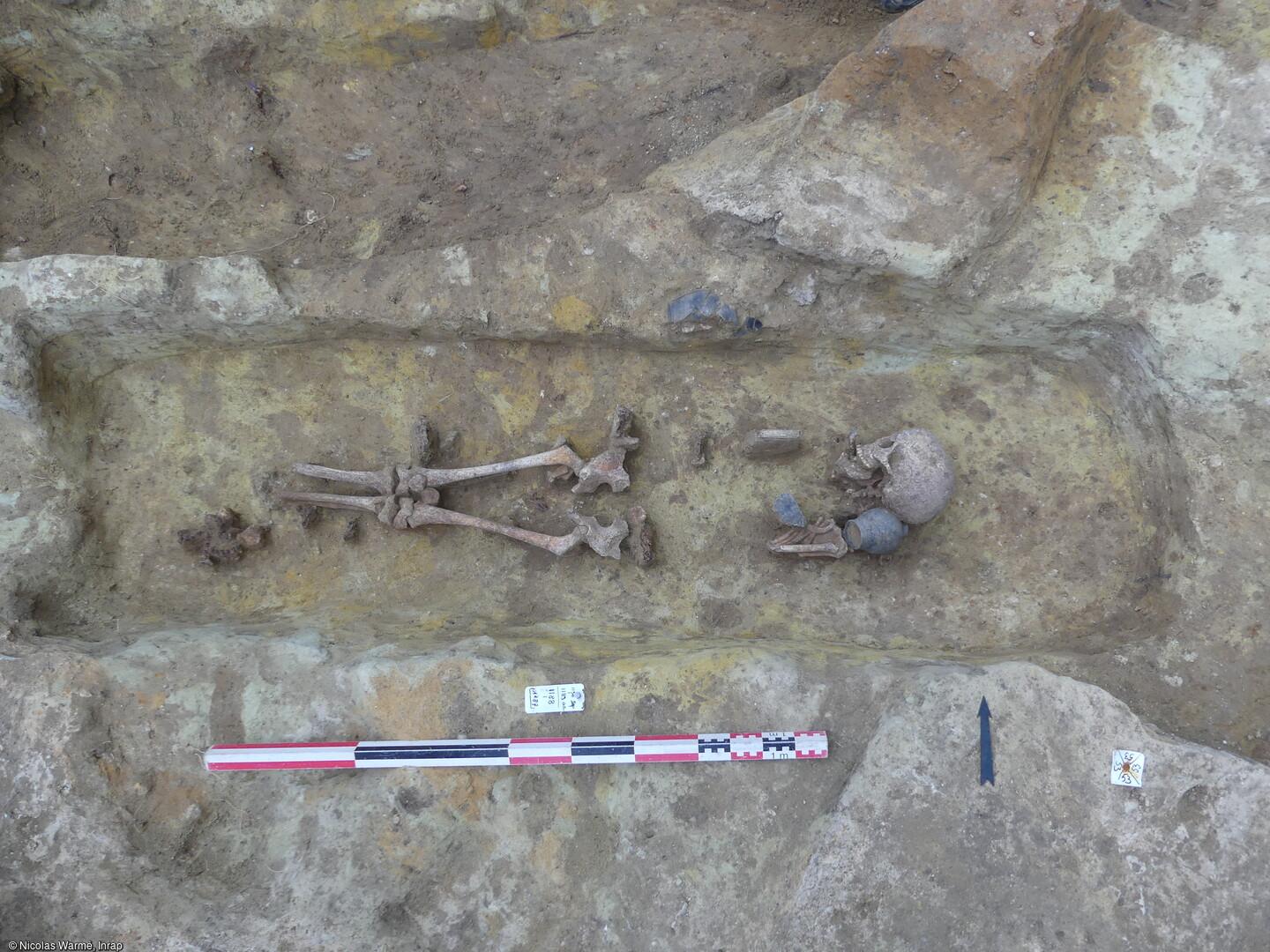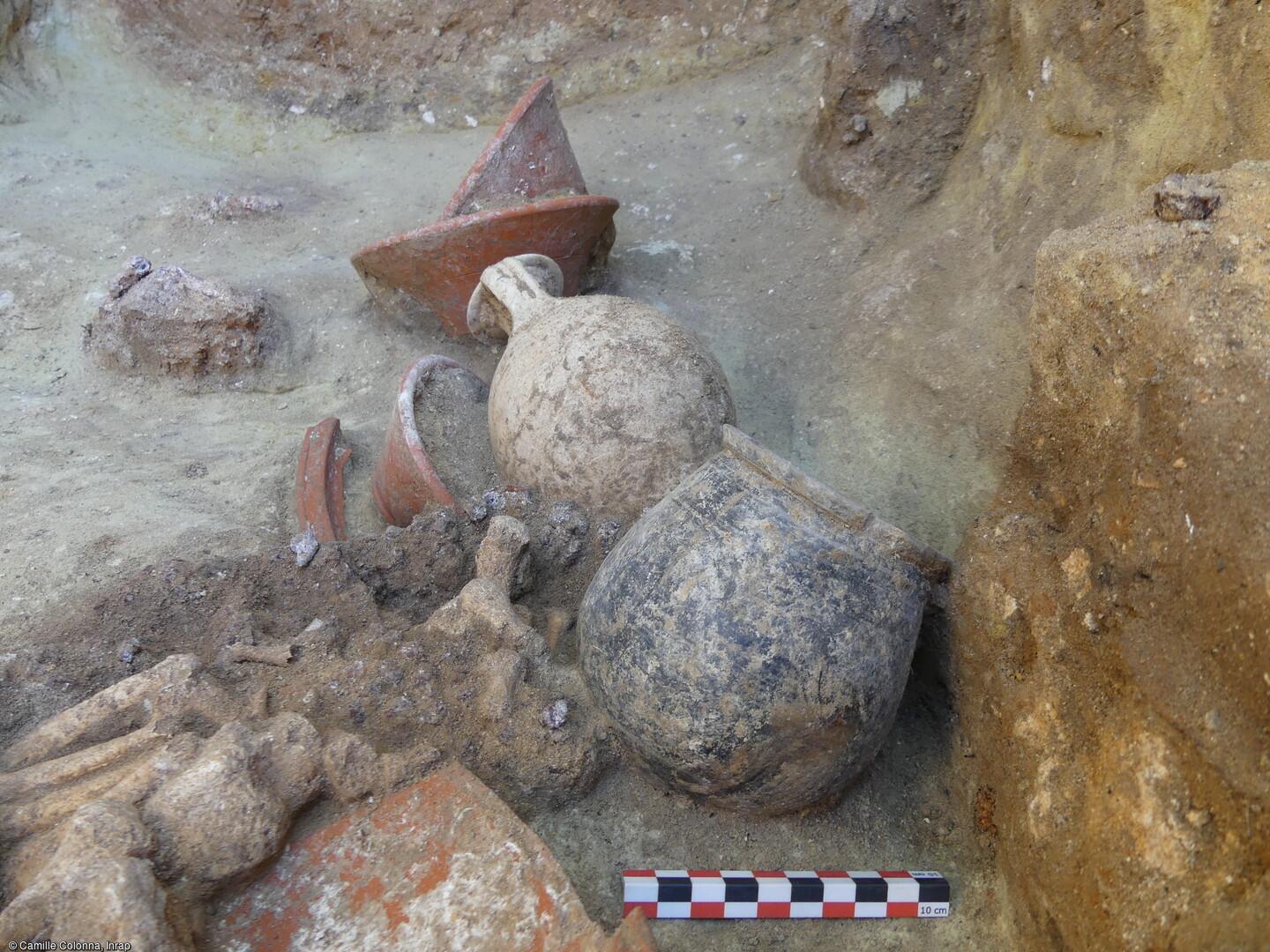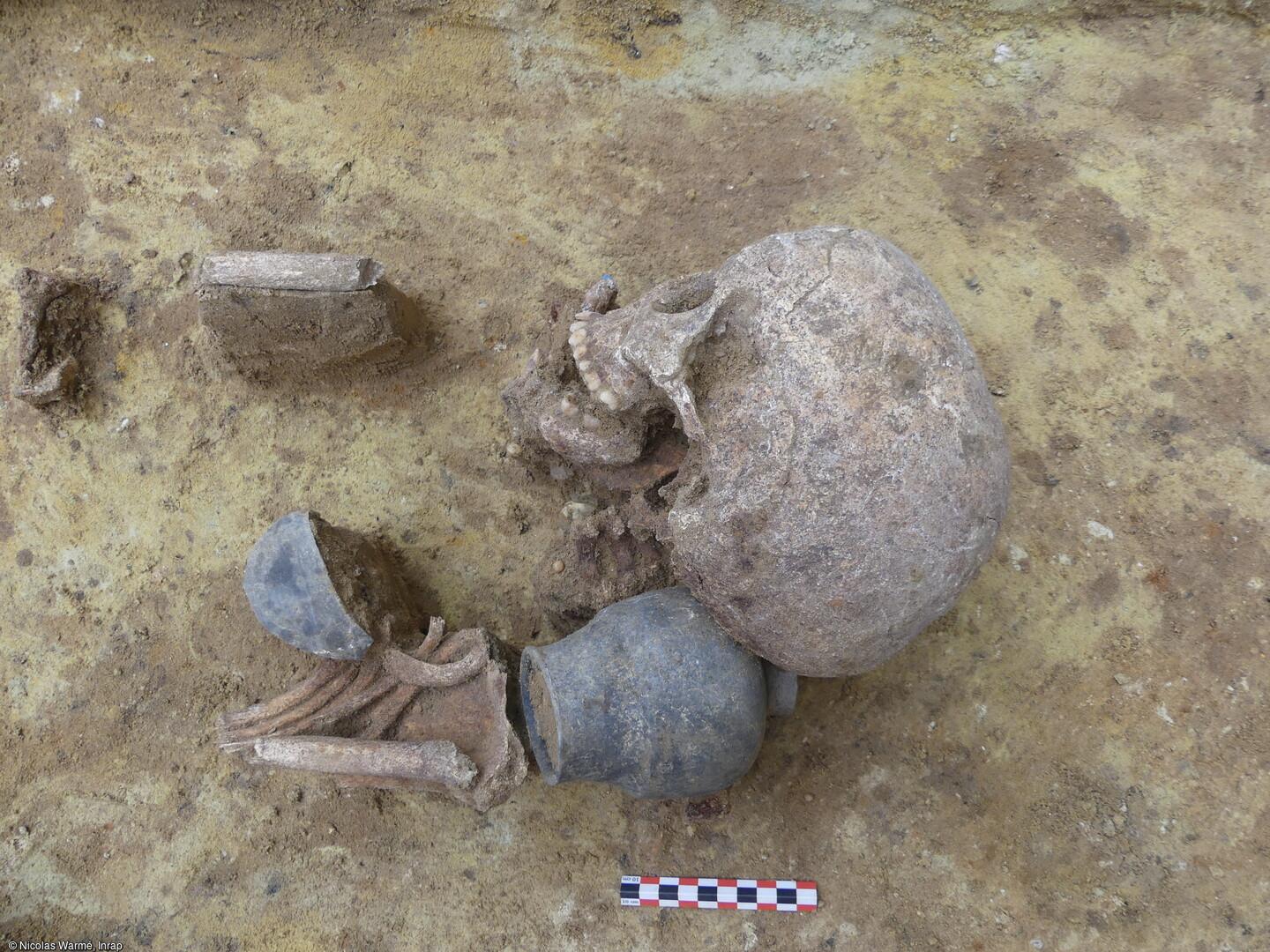Just meters away from a busy train station in central Paris, an archaeological discovery has been made. This incredible discovery has revealed 50 graves that offer a rare glimpse into the lives of the people who lived in the French capital’s precursor, Lutetia, nearly 2,000 years ago.

The discovery of 50 graves in this necropolis is a remarkable find, providing insight into the lives and traditions of a bygone era. The remains of the individuals laid to rest here offer a fascinating glimpse into the ancient world, and the discovery has already started to reshape our understanding of Paris’ history.
Despite several road works over the years, as well as the construction of the Port-Royal station on the historic Left Bank in the 1970s, the underground necropolis was never discovered. However, plans for a new railway station exit triggered an archaeological excavation.

Camille Colonna, an anthropologist at France’s National Institute of Preventive Archaeological Research (INRAP), stated at a news conference that there were already “strong suspicions” that the site was near Lutetia’s southern necropolis.
The “Saint Jacques” necropolis, the most important burial site in the Gallo-Roman town of Lutetia, was previously excavated in the 1800s. Only valuable artifacts were taken away from the tombs, leaving numerous bones, funeral offerings, and other relics behind.

The necropolis was thereafter covered over and lost to time once more. The INRAP crew uncovered a region that had never been excavated previously. “No one has seen it since antiquity,” INRAP president Dominique Garcia said.
The researchers were also overjoyed to discover a skeleton with a coin in its mouth, which allowed them to date the burial to the second century AD. The excavation, which began in March 2023, has uncovered 50 graves, all of which were used for burial – not cremation, which was also common at the time.
The remains of the men, women, and children are thought to be Parisii, a Gallic population who resided in Lutetia during the Roman Empire’s rule of the town on the banks of the Seine.
The skeletons were buried in wooden coffins, which were now only identifiable by their nails. More than half of them were buried with gifts like pottery jugs and goblets. A penny was often put in the coffin or even the mouth of the dead, a practice known as Charon’s obol at the time.
Charon is the ferryman of Hades in Greek mythology, and the currency was considered a bribe to transport the souls of the dead over the river Styx.
The researchers also discovered shoes within the tombs, identifying them by the little nails in the soles. According to Colonna, the shoes were either at the feet of the dead or next to them, like an offering.

Jewelry, hairpins, and belts were also found. A pig’s and another small animal’s skeletons were uncovered in a pit where animals were considered to have been sacrificed to the gods. Unlike the 1800s excavation, the crew wants to remove everything from the necropolis for research this time.
“This will allow us to understand the life of the Parisii through their funeral rites, as well as their health by studying their DNA,” Colonna said.
Garcia further stated the ancient history of Paris was “generally not well known”. The unearthed graves open “a window into the world of Paris during antiquity,” he added.
The discovery of the ancient necropolis next to a train station is an interesting find that sheds light on the city’s rich history. It’s a reminder that history is all around us, and we never know what we might discover right beneath our feet in our everyday surroundings.
As archaeologists continue to study the area, it’s exciting to imagine what other secrets the site might reveal about ancient Paris. We look forward to hearing more about the results of the ongoing archaeological work in Paris.




